Welcome to the Violin and Viola Studio of Angela Schauer!
Build a bow hand
Monday, April 4, 2022 by Angela Schauer | Uncategorized
Here is how I build a bow hand. This is a Franco-Belgian style hold, popularized in the U.S. by famous pedagogue Ivan Galamian. If you watch a lot of videos of violinists past and present, you will notice some bow holds look more angular with a straighter pinky. That type of bow hold is called the Russian bow hold. The Franco-Belgian hold is what I teach, because it is what I learned. Key characteristics of the Franco-Belgian bow hold are flattened knuckles and a curved pinky. The amount of space between the pinky and ring fingers, and the middle and index fingers will largely depend on individual hand size and shape. 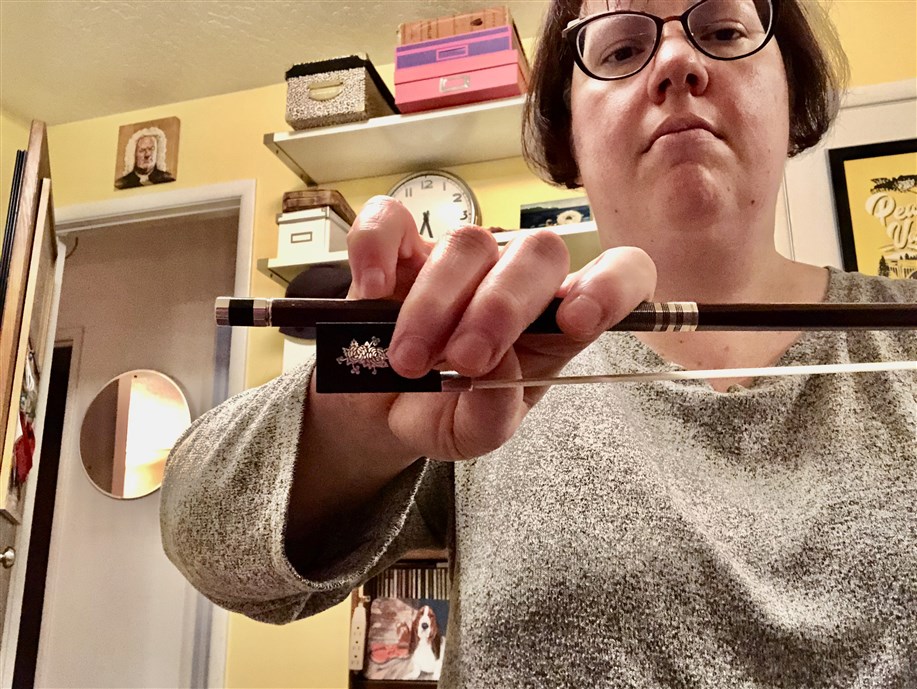
The first step is to always have the stick of the bow supported - either with your left hand or the strings of the violin. If you don't support it, your pinky will get stuck holding all the weight. Hold the bow vertically (tip towards the ceiling) if you want to hold the bow with just the right hand.
I start with a curved thumb placed at the bottom of the wrap, careful not to place it thumb in the cut-out part of the frog. The tip of the thumb, not the pad, should be touching the stick.
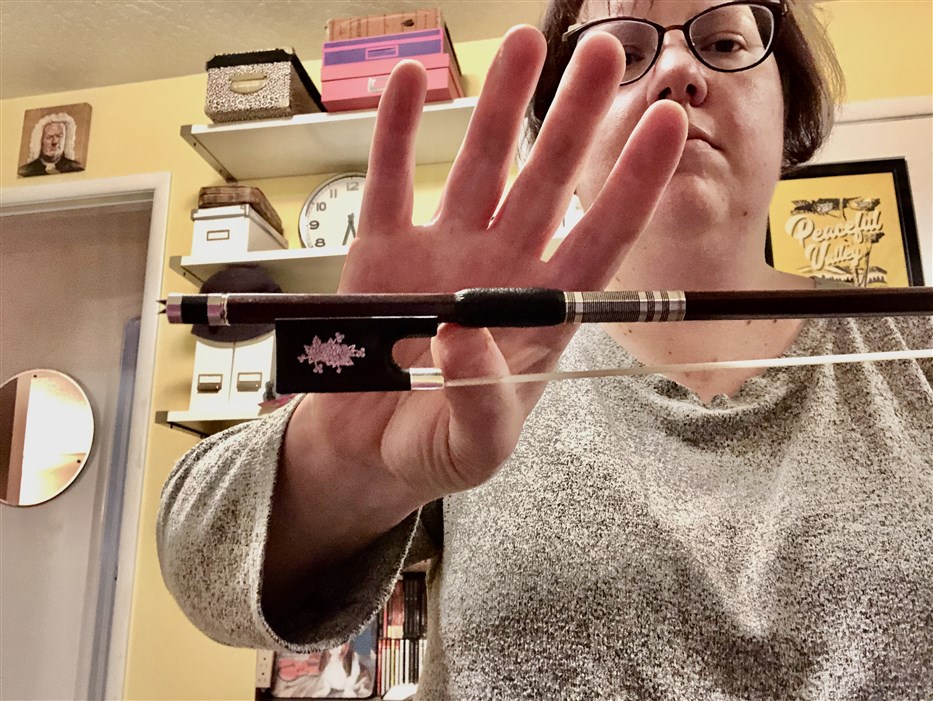
Next, I round my middle finger over the stick and across from the nail of the thumb. My ring finger is placed next to the middle finger, with the pad of my finger touching the frog.

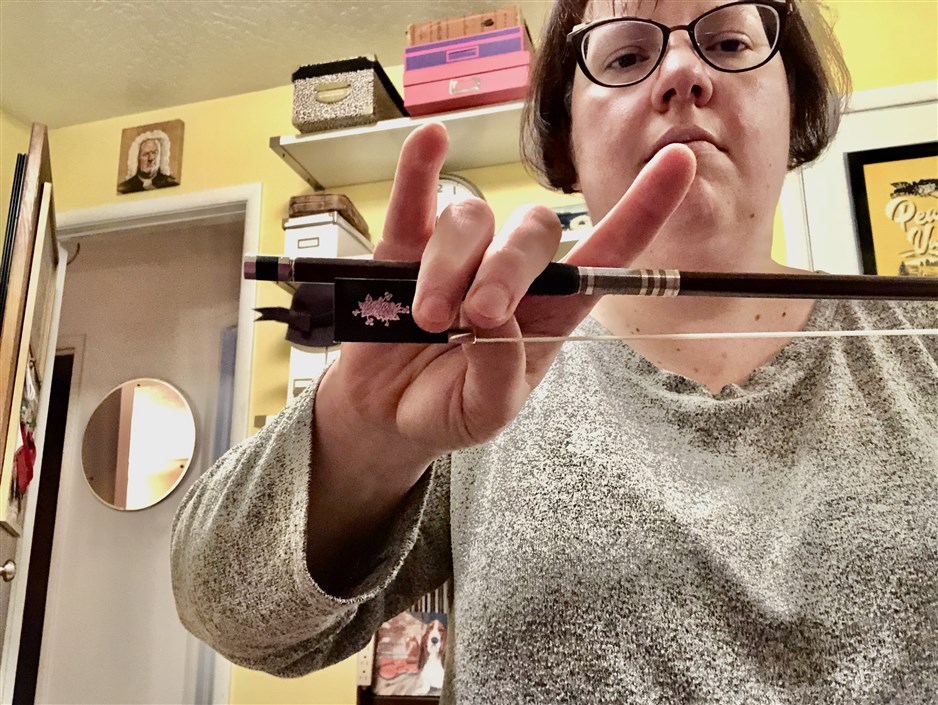
My index finger is placed next, landing on the bow between the top two joints and with a little from the middle finger.
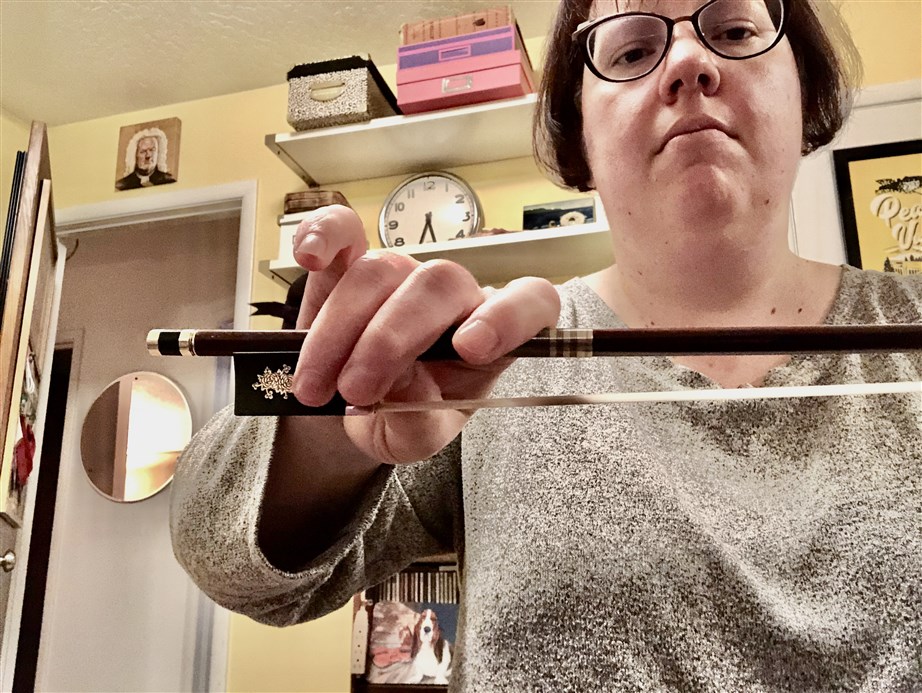
Lastly, I place my pinky on its tip while maintaining an arched shape. The pinky touches the bow just on the side/corner just before the flat top of the bow.
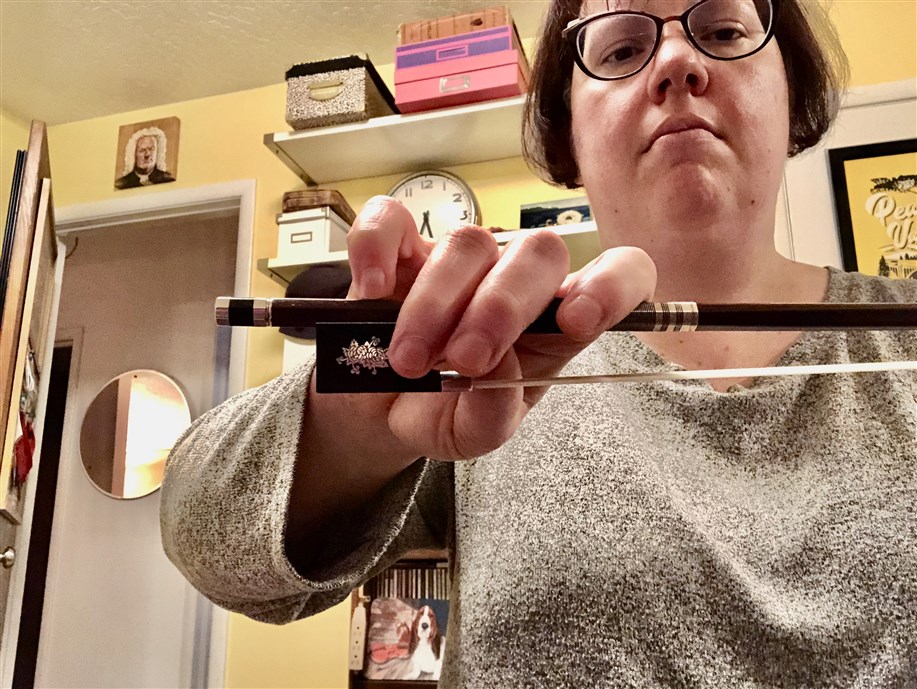
From the side.
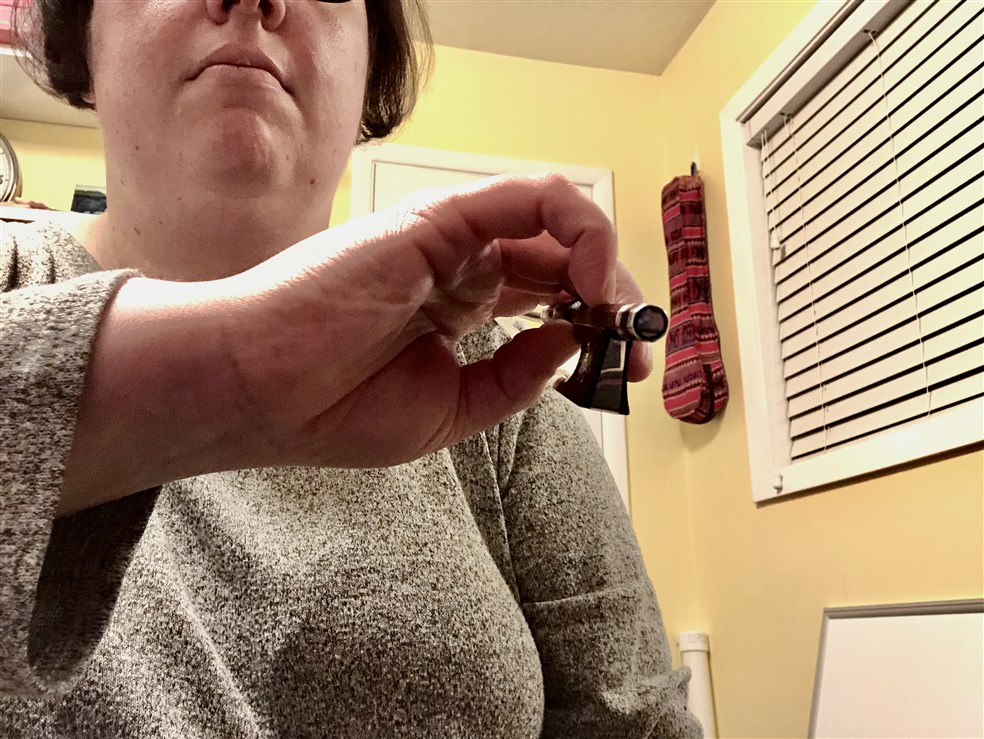
Paired with the violin.
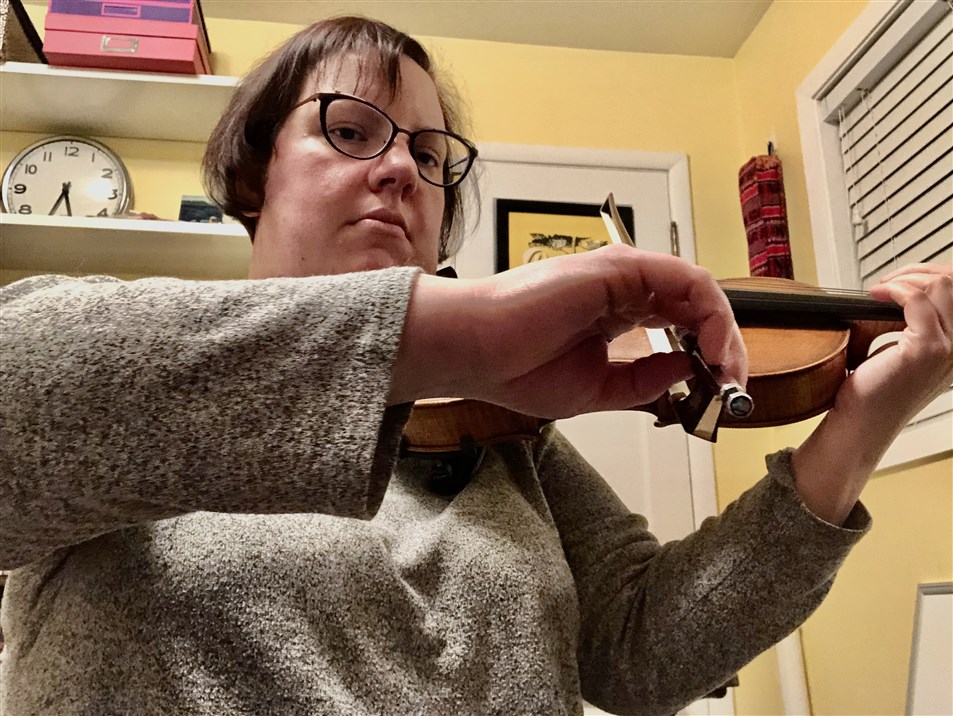
Another way to practice building your bow hand is with a pencil. Regular yellow octagonal pencils work best.
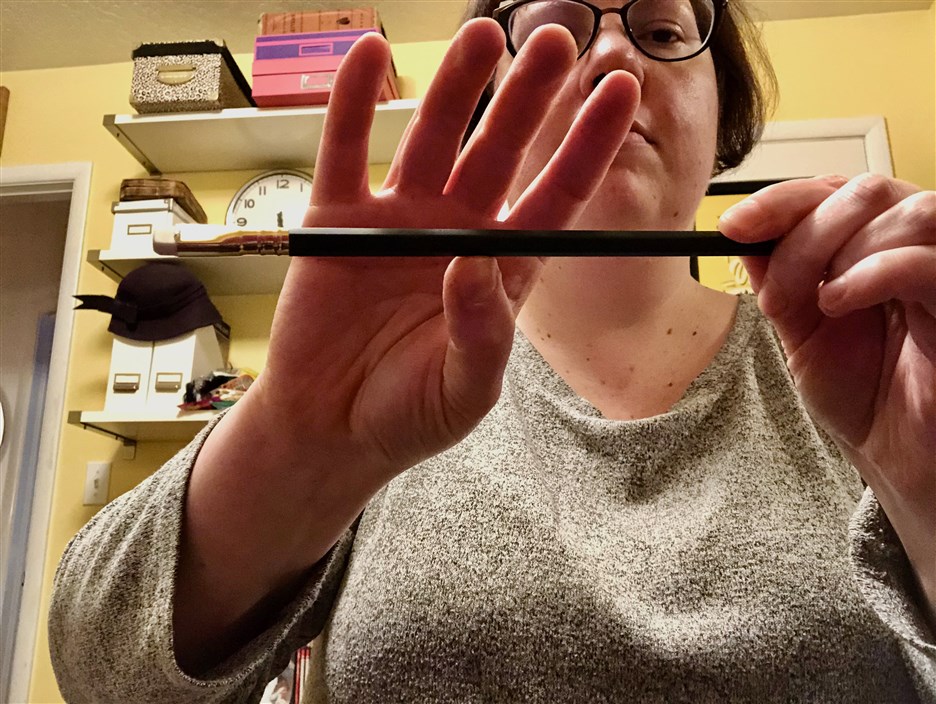
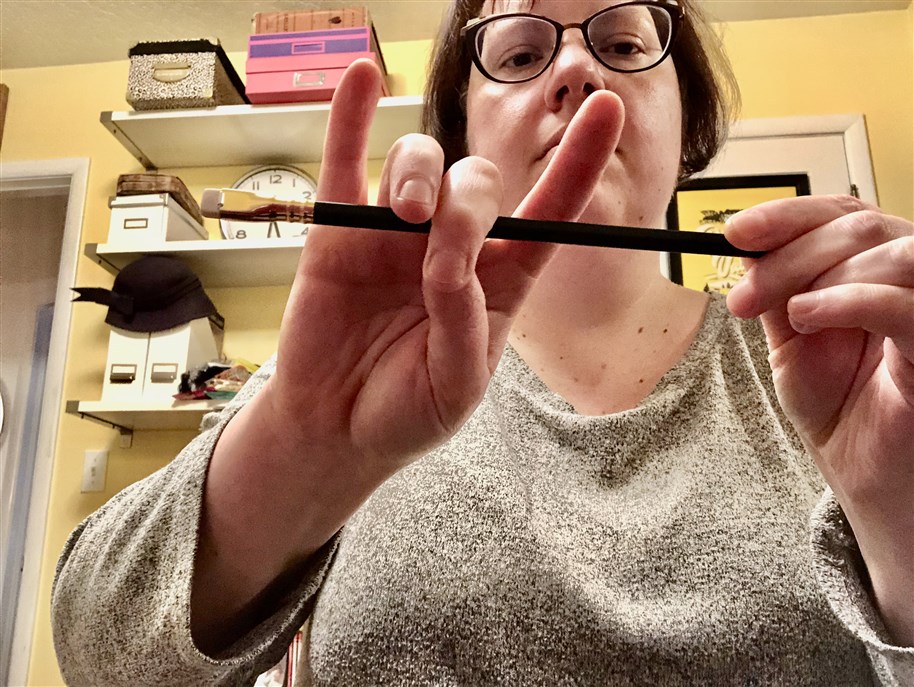
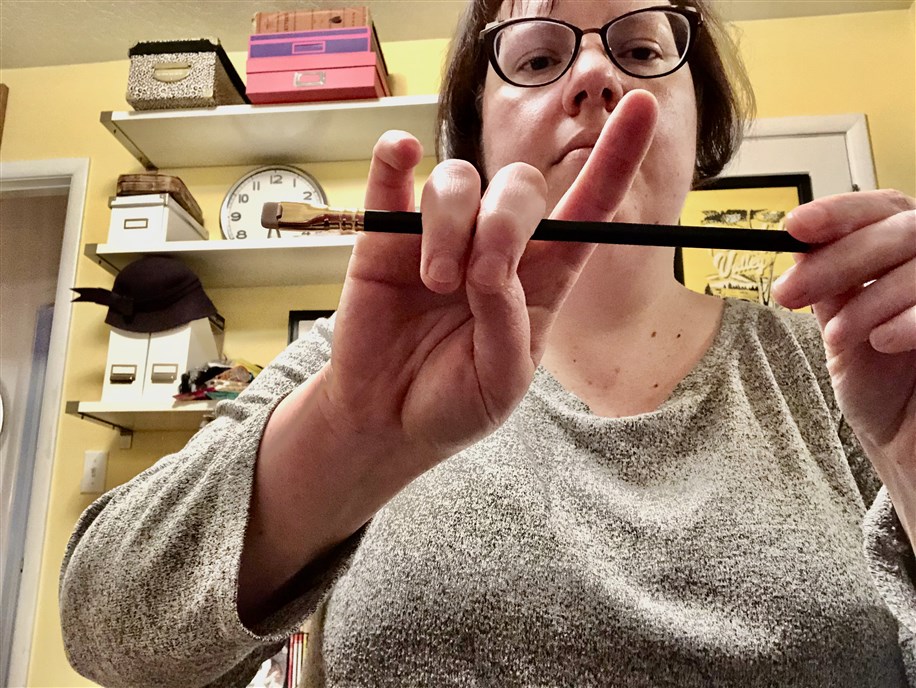
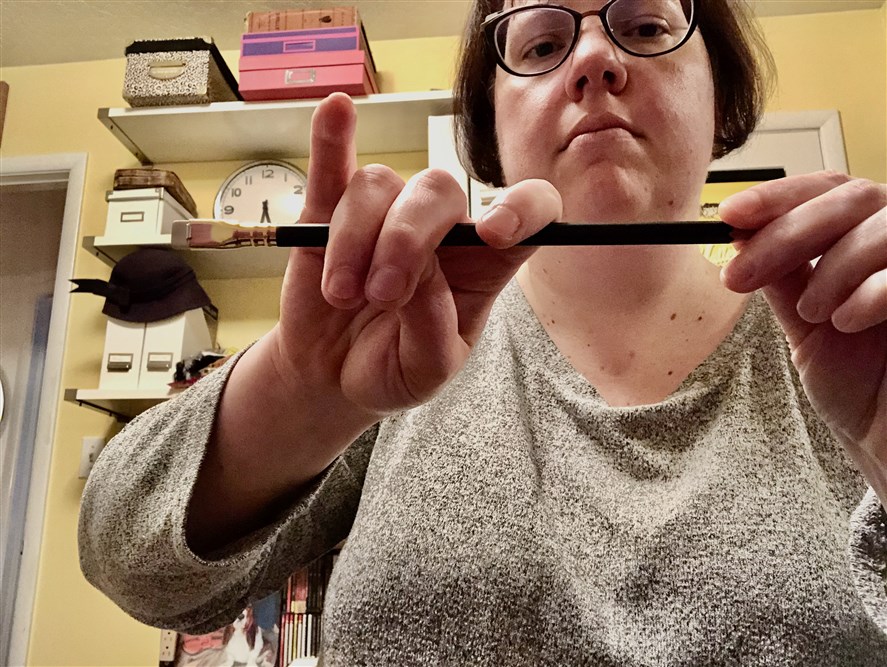
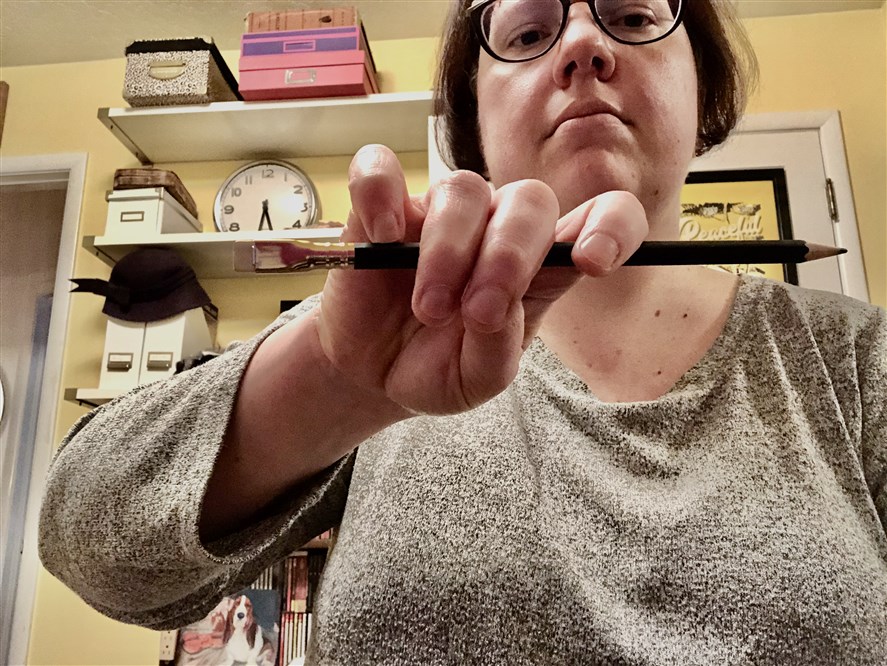
Music theory
Monday, March 11, 2019 by Angela Schauer | Uncategorized
Here is a website that has useful quick-facts style study sheets for music theory. Rhythm? Meter? Scales? Intervals? This site explains it all.
Much of the information is presented in treble clef, so it may not be as useful for violists (or it might be a good reason to learn to read treble clef).
Recommended Tuning and Metronome Apps
Tuesday, December 4, 2018 by Angela Schauer | Uncategorized
This app does it all- helps with tuning (watch for the green smiley face), metronome, recording and playback! Make sure it’s set to A440 and equal temperament when tuning your open strings!
Tempo - Apple Version and Android Version
This is my preferred metronome app for its clean design and user friendly interface.
